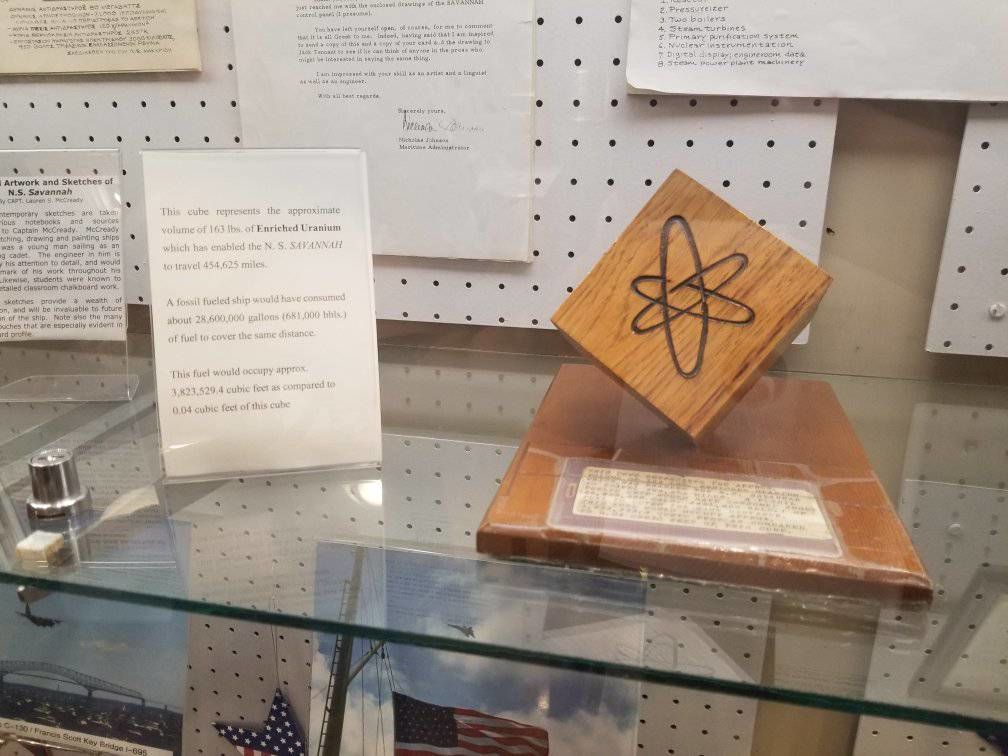The Nuclear Ship Savannah wooden cube mockup of uranium-235
By Nick Touran, Ph.D., P.E., 2023-07-01 , Reading time: 1 minute
This cube is aboard the N.S. Savannah:

The wooden cube from N.S. Savannah (credit: RJ Fader)
The caption reads:
This cube represents the approximate volume of 163 lbs. of Enriched Uranium which has enabled the N. S. SAVANNAH to travel 454,625 miles.
A fossil fueled ship would have consumed about 28,600,000 gallons (681,000 bbls.) of fuel to cover the same distance.
This fuel would occupy approx 3,823,529.4 cubic feet as compared to 0.04 cubic feet of this cube.
Funny math?
I think the person who made this may have goofed up the math slightly. In particular, the mass density is way off:
\[\frac{163 \text{ lbs}}{0.04 \text{ ft}^3} = 65.3 \frac{\text{g}}{\text{cm}^3}\]Nothing is that dense. Uranium metal is around 19 g/cm³ and UO₂ is around 10. The densest cube of uranium metal weighing 163 lbs should have a side dimension of 6.19 in. (15.7 cm) and a total volume of 0.137 ft³ (3.89 L). This cube appears to be 2 inches too short on a side and only 29% of the total correct volume. Would be nice to confirm the dimensions of the cube itself if anyone visits.
The oil gallons, bbls, and cubic feet conversions all do check out 👍.
At least the energy equivalence checks out
On the energy equivalence side of things, 163 lbs of U-235 represents 5.87 petajoules of energy. A nuclear ship engine of the PWR type is around 27% thermally efficient (shaft horsepower per thermal watt), so that uranium could do about 67,300 horsepower-years.
28.6 M gallons of heavy fuel oil (33.4 MJ/L) contains 3.62 petajoules of energy, and these engines typically have more like 44% thermal efficiency, so that much oil could do about 67,600 horsepower-years. We have reasonable equivalence!
See Also
Better photo: https://www.flickr.com/photos/rocbolt/8370237926/in/album-72157632493733676/
Reader comments